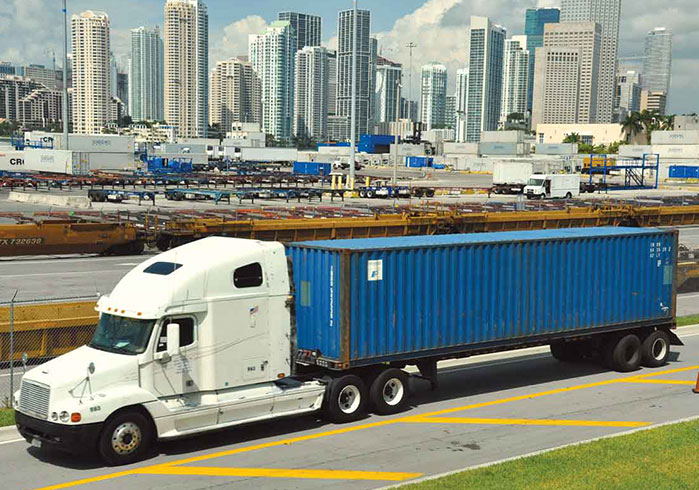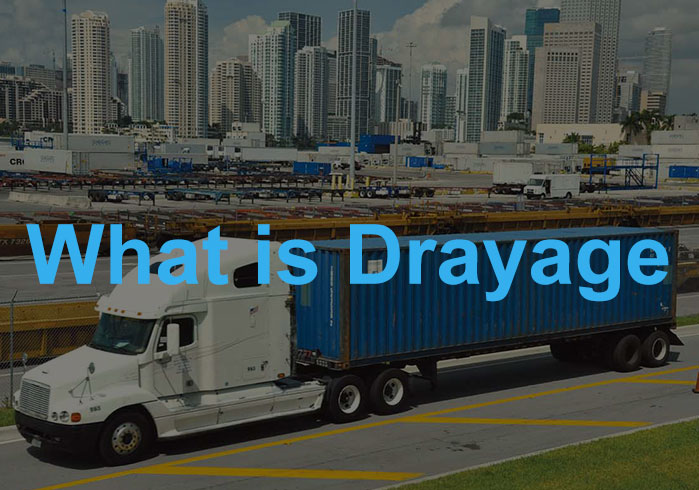
We live in a multi-modal world that requires making changes to business practices. Before reaching the intended destination (i.e. the customer’s doorstep for example); your product will have gone through various stages and modalities of transportation. Drayage is likely to be one of those transportation systems that the product has gone through.
Although not many laypeople are aware of it, drayage plays an important role in any supply chain. For example, it is responsible for providing the right connections so that multimodal freight chains function properly. Understanding drayage is part of the process of understanding how your supply chain works.
Definition of Multimodal Transport
Multimodal transport involves more than a single form of transportation. Through drayage, a container might leave a factory in a manufacturing country such as China. The products are then delivered to a port before being loaded onto a ship that is intended for a market such as the USA. Once in the destination country, the container is then loaded onto a truck. The drayage service will then take it to a rail depot, before being loaded onto a train car for delivery to the final destination that is inland.
Typically, the container is additionally loaded onto another truck for more drayage services. This final short-haul truck takes the container to a fulfillment warehouse, distribution center, store, or other business. Moreover, air freight can also be a segment of a multimodal transport supply chain.
Using multimodal transport facilitates global supply chains. A multimodal approach allows businesses to take advantage of the efficiencies of different types of transport for different segments of the trip. Hence, transportation costs are kept as low as possible.
Key terms you need to know
There are different types of drayage services available for shippers. According to the Intermodal Association of America, there are six of them that are currently dominant. They are briefly defined below:
- Pier Drayage: This involves trucking to the port. The drayage truck picks up a load at a rail hub and delivers it to a pier or dock before loading onto a ship.
- Intra-Carrier (IMX) Drayage: Drayage trucks transport goods within the intermodal transport hub of a single freight carrier.
- Inter-Carrier Drayage: Trucks transfer cargo from carrier to carrier. Examples include transfer from rail to sea, rail to rail, or sea to rail. Drayage trucks may deliver cargo to long-haul trucking companies for transportation to the final destination.
- Shuttle Drayage: This occurs when a dock or shipping hub has more shipping containers than it can hold. Shuttle drayage moves containers to alternative locations for temporary storage. The shuttled containers are either empty or full depending on the situation.
- Expedited Drayage: This occurs when cargo has to get to its destination quickly and urgently.
- Door-to-Door Drayage: This occurs when trucking the cargo direct from the transportation hub to the end customer.
Pick & Pack Methods
The original meaning of a dray was a horse that pulled heavy loads, alternatively known as the draft horse in common parlance. Large and strong horses, such as the Clydesdales, were required for this purpose. Dray was also a term for the open-sided cart that a dray horse would pull to haul heavy loads.
The term drayage was used to describe the process of moving goods in a dray cart. Drayage is also the term for the charge for this type of freight service. The person who performs the drayage is still called a drayman. The contemporary supply chain uses a truck instead of a horse.
Drayage services are used to connect different modes of long-haul transport. This short-haul trucking transfers goods from container ships to rail yards, warehouses, or storage lots. At other times, drayage can deliver freight to order fulfillment warehouses. The term drayage also refers to services that move goods over relatively short distances. For example, when exhibitor display materials are moved from the loading dock into a convention hall.
Managing Inventory
There is hardly any truly local supply in modern e-Commerce. Instead, the vast majority of supply chains span multiple countries. This is a necessity to ship multiple products to multiple destinations across the globe.
Nevertheless, the need for drayage services is essential in contemporary e-Commerce. This is because most global supply chains are reliant on multimodal transport to move goods from the manufacturer to the customer. Drayage provides crucial links in this transport chain. These short-haul trucks deliver FTL or LTL freight loads between one form of transport and another.
Zone-Skipping
Some e-Commerce businesses utilize zone skipping to lower their delivery costs. Zone skipping means combining many orders into LTL or FTL freight and shipping them closer to their final destination. The advantage in this is the reduction of costs because the cargo travels using cheaper freight for the majority of its journey.
Moreover, drayage services could be used to deliver packages to a trucking hub to facilitate long-distance shipping. The trucks may be used to get freight from the hub to the carrier, before final delivery to individual customers.
Multimodal Shipping to Fulfillment Warehouse Locations
Some businesses utilize drayage to move products from a port to a rail or trucking hub or even a fulfillment warehouse. The order fulfillment will allow the goods to move from the pier to a warehouse via a drayage service. The downside to this is the possibility of increasing the delivery time and also the associated costs.
Some businesses are looking to make use of centrally-located warehouses. They can then ship at a lower cost to more inland destinations. The fulfillment warehouse should, therefore, be strategically located. In practical terms, this means that it should be away from the coast.
A business may also use drayage services to transfer shipments from port or rail to their 3PL services provider. The cost for this short-haul trucking will be more than made up for by what they save on shipping.
Working with Drayage Service Providers
In many instances, Draymen are in effect independent contractors who line up to transport containers each time a ship comes in. However, the vast majority of e-Commerce business owners will never directly contract with the truck. Instead, they will work with logistics companies who are responsible for handling their multimodal transport.
Logistics providers are outsourced companies that typically handle the transportation aspects of the supply chain. Hence, they are different from third-party logistics companies that manage warehousing, order fulfillment, and customer shipping.
Wrapping Up
You can reduce your shipping and freight costs through the strategic use of drayage services. This will only happen if you have a good understanding of what happens at each stage of the journey. You should try to establish strong working relationships with all the parties that are involved in the transportation of your product.
By storing the products closer to their destinations, you reduce logistical costs. For example, you will ship to fewer zones and will give yourself more lead time to work with. Customers are particularly enthusiastic about buying from efficient providers, particularly in the competitive e-Commerce arena.





One Comment on ““What is Drayage?””
Hello Amanda ! I’m interested in returning my 1986 old Porsche back to Phoenix. Few years ago I shipped the car to Barcelona/Spain and now is ready to go back. Still has Arizona plates . I could drive the Porsche to the Barcelona port myself. I am in Barcelona till October 10. Please give me a quote as soon as possible. Looking forward to your response
Best regards,
Ramon Vives